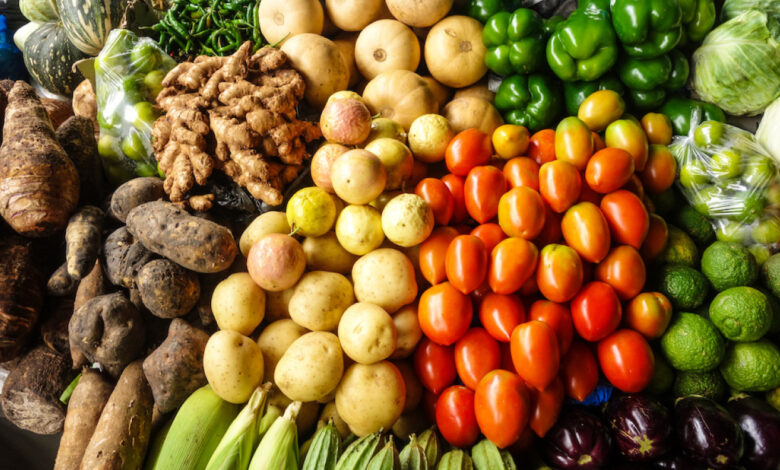The long road to building sustainable food systems in Africa

Food is expensive in many African countries and not enough for everyone. It has caused political revolutions in Egypt, Sudan, and Tunisia. And it was the inspiration for the 1985 hit, ‘We Are the World,’ courtesy of Lionel Richie and Michael Jackson. Yet the problem is far from being solved. Technology companies are stepping into the ring of entities duelling with this problem, and they have a chance to show that aggregating smallholder farmers with technology and farming support can make a dent.
South Africans spend a third of their income on food. In 2021 Egyptian families reportedly spent up to 45% of their monthly expenditure on food. In Kenya the figure rises to 46.7%, Cameroonian families spend 45.6%, and in Algeria, food gobbles 42.5% of monthly expenditure. In Nigeria, Africa’s most populated country, 56% of every naira earned is spent on food.
It is an unlikely problem given that Africans are more likely to work on a farm than any other job. In 2020, almost 44% of Africans were employed in the agriculture sector, according to Statista. Other sources put the figure much higher. Despite the agricultural sector providing work for more people than any other sector, 37 African countries (out of 54) face “hunger levels that are ‘Stressed’ or higher,” per the 2022 Global Hunger Index, an annual report from Concern Worldwide and Welthungerhilfe.
For many decades, the hunger problem negatively defined Africa in Western media. A lot of that negative coverage has been reduced on the back of local and global criticism over the portrayal of Africa as a hungry continent. Fewer Africans are hungry relatively speaking and in absolute terms. However, while the number of people starving has reduced, the number of people who are one shock away from hunger has increased. In the last months of 2022, more than two-thirds (70%) of people most affected by the global food crises lived in just three East African countries—Ethiopia, Kenya, and Somalia.
Persistent insecurity in Africa’s backyards does more to undermine local and international aid efforts to improve agriculture and deliver help to affected populations, together with drier-than-normal weather the violence forces farmers to allow fertile fields to lie fallow or give up harvests. Russia’s invasion of Ukraine is a pain African countries could do without. But the bigger effect of the unfortunate war has been a cut in aid from Europe that supported hunger alleviation programs.
Still, local conflict is a more pressing challenge to building up Africa’s fragile agricultural ecosystems. Usually, the people who suffer the most are smallholder farmers in places affected by both a changing climate and violence. They usually depend on the food they produce to feed their families and sell the excess to earn some money. When they cannot go to their farms, everyone suffers.
From a big-picture perspective, things seem to be getting better—marginally and slowly. Farming practices have improved ever so slightly due to land reforms in some African countries. And more modern farming approaches are taking root. Showing that some of the problems facing efforts to provide sufficient food for Africans are more solvable than stopping gunfights. Importantly Africa’s growing class of tech entrepreneurs who typically focus on digital payment technologies are finding the opportunity to solve these problems attractive.
Take ThriveAgric for example, a Nigerian startup that combines financing with market access support for smallholder farmers. In the last 3 years, Thrive Agric has built a network of 500,000 farmers that it supports with financing for farm inputs. The company has also entered partnerships with commodity boards to help it find markets for the farmers they support.
Earlier this year, Thrive Agric announced that it had hit a milestone of $100 million in credit lent to farmers in its network. Thrive Agric is not paid back in cash. It loans against expected crop yield, works with the farmers to improve yield and manage farming operations and sells the harvest to a network of off-takers. Profits are shared with farmers, Oshone Anavhe, Thrive Agric’s VP of operations explained. This creates an interesting model that effectively aggregates smallholder farmers and lends Thrive Agric the scale of a commercial player—albeit with more people employed.
It was not always a smooth ride for Thrive Agric. It originally began life as a crowdfunding platform that funded farmers and split 80% of profits between farmers and subscribers and kept 20% for itself. But Covid-19 pandemic restrictions changed that and almost sank the startup before it managed a turnaround and opted to pursue a model that relied on institutional funding instead of flighty short-term loans from multiple subscribers.







